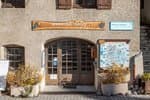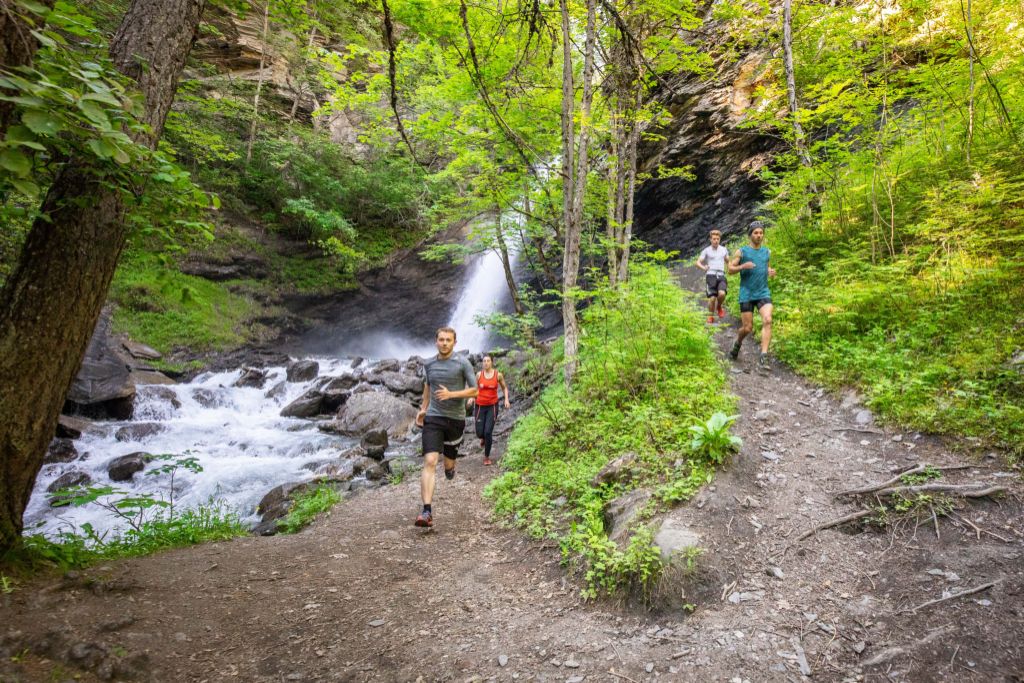
Ondinette (trail route no. 18)
“This trail is a must on hot summer days because it offers the coolness of the river, with several stretches along its banks, the deep shade of the forest and a pleasant break by the Cascade de la Pissette!” Marie-Geneviève Nicolas, park ranger at the Parc National des Écrins
Description
From the campsite, head to the village square in front of the church and take the narrow lane (between the church and the shop called "Les Vaudois") which runs through old Vallouise.
- Take a road running downhill on the left and then turn right towards the bridge, the Pont des Fontaines. Follow the track, which soon runs into the Onde valley and starts a long climb up the left-hand bank of the river. It joins the road just before a bridge, the Pont des Places, which you cross.
- Continue straight on towards Narreyroux. This lovely track edged by low walls rises gently through the forest. It joins a track which you follow, heading downhill.
- Follow the path on the right which climbs up towards Narreyroux and the Pont des Fontaines and, after two hairpins, take the path leading off to the Pont des Fontaines and Vallouise. Head downhill past the waterfall (Cascade de la Pissette) and, when you come to the track, turn right. Stay on the right-hand bank of the Onde until you reach the Pont de Gérendoine, and then continue straight on along the road.
- After the Park Centre ("Maison du Parc"), turn left and back to your starting point.
- Departure : Camping Huttopia, Vallouise
- Arrival : Camping Huttopia, Vallouise
- Towns crossed : Vallouise-Pelvoux
Altimetric profile
Recommandations
Before setting off, it is very important to check the opening periods for this route on the website: https://stationdetrail.com/fr/stations/le-pays-des-ecrins/parcours
Share your photographs on social networks with #stationdetrailecrins
Check weather conditions before setting off.
Rescue services contact details: Secours Montagne (Mountain Rescue): +33 (0)4 92 22 22 22 or 112
Show consideration for the work of farmers, livestock keepers and owners
Close all gates behind you
Take your litter home
Do not take shortcuts across pastureland
The trail routes are also suitable for walking
Information desks
Place de l'Eglise, 05340 Vallouise
Vallouise Park house
, 05290 Vallouise
Information, documentation, models, exhibitions, screenings, product sales and works of the Park. Guided tours for school, reservation required. The new Park House opened in Vallouise since June 1, and offers visitors an interactive permanent exhibition inviting to explore the area and its heritage. A temporary exhibition space will allow a renewed offer. Finally, the device is completed by an audiovisual room to organize screenings and conferences Free admission. All animations of the Park are free unless otherwise stated.
Transport
Public transport >> www.pacamobilite.fr
Consider car-sharing >> www.blablacar.fr
For more information, ask at the Tourist Information Office nearest to the trail starting point.
Access and parking
10 km from L'Argentière-La Bessée, take the D994E.
Parking :
11 points of interest

Place de l'Église - Thibaut Blais  History
HistoryThe church in Vallouise
The church of Saint-Étienne dates from the fifteenth and sixteenth centuries. Inside is an altarpiece and a tabernacle in gilded wood dating from the eighteenth century, together with come mural paintings. Not far from the church stands the late sixteenth-century Chapel of the Penitents with a nineteenth-century painted facade.

Petit rhinolophe enveloppé dans ses ailes - Mireille Coulon - Parc national des Écrins  Fauna
FaunaThe lesser horseshoe bat
In summer, bats take up residence in the church roof. The species living here is the lesser horseshoe bat, which has been in serious decline over recent decades. Every year, the mothers return after hibernating in caves and each one gives birth to one bat pup. Bats are insectivore mammals threatened by the insecticides used on farmland and on wooden structures and the loss of their hunting habitats and roosts, among other things. They are all protected.
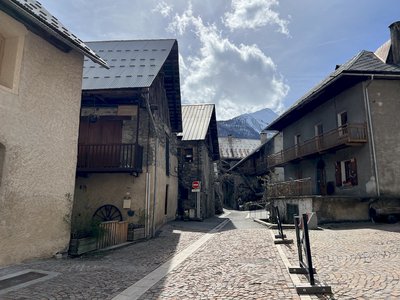
Rue de Champ de Ville - Pierre Nossereau  Architecture
ArchitectureVallouise
Multi-storey houses - typical of the architecture in the valley in the seventeenth and eighteenth centuries - stand on the old village street. The ground floor was reserved for animals, the first floor for habitation and the upper floors for grain storage. People moved from one floor to another by means of balconies interconnected by a staircase. Many of these balconies are arcaded with stone columns. This type of arcaded balcony is found throughout the valley.

Torcol fourmilier - Damien Combrisson - Parc national des Écrins  Fauna
FaunaThe northern wryneck
The old trees in the orchard are home to the northern wryneck. It has a loud song, rather like that of the green woodpecker, only slower. This bird owes its name to the extreme way it extends and twists its neck when it feels threatened. Its French name torcol fourmilier is a reference to the fact that it feeds on ants (fourmils in French). Difficult to spot because its plumage merges into the colour of the tree trunks, it gives its presence away by its song when it returns from its migration.
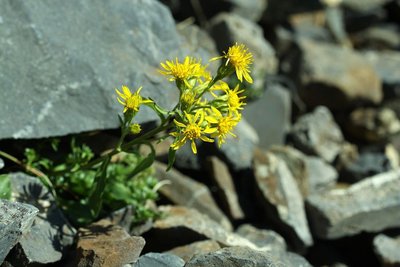
Petite verge d'or - Cédric Dentan - Parc national des Écrins  Flora
FloraThe great goldenrod
In damp spots on the edge of the track, swathes of tall plants grow. It forms great plumes of tiny yellow plants. The great goldenrod, still known as the tête d'or or "head of gold" is a plant native to North America and introduced into Europe in the eighteenth century as an ornamental. Since then, it has colonised a large are of Europe and in some places it even competes with the local flora.
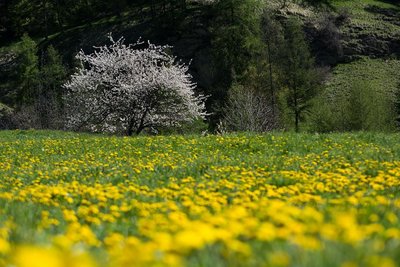
Merisier en fleur - Mireille Coulon - Parc national des Écrins  Flora
FloraThe bird cherry
Here where the soil is sufficiently cool, a small tree with oval, pointed leaves grows on the side of the track. In May, when it starts to come into leaf, the bird cherry, a cousin of the familiar ordinary cherry tree, produces numerous clusters of highly scented white flowers. These later develop into in loose bunches of small dark cherries which are only just edible. It was called the "putiet" or stinking wood, not because of its scented flowers of course, but its bark.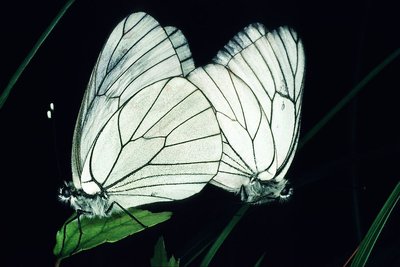
Le gazé - Jean-Marie Gourreau - Parc national des Écrins  Fauna
FaunaThe black-veined white
What could be better than a great pile of manure, its nutrient-rich liquid seeping onto the road? This windfall attracts clouds of butterflies which settle in their dozens on the road, risking their lives. It is the ideal spot (well, sort of!) for admiring them because they are so preoccupied with sipping this nectar. One of them is easy to identify: the black-veined white with very distinctive black veining. This butterfly is very common, so it can be spotted very frequently, not only near piles of manure!
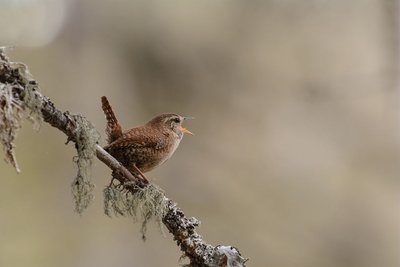
Mireille Coulon - Parc national des Écrins  Fauna
FaunaThe Eurasian wren
A piercing song, long and flowing with numerous trills, bursts from the forest. What a pair of lungs! This powerful song is that of a tiny bird with a plump body and a short tail, which is often raised: the Eurasian wren. It lives in cool forests with dense undergrowth or in bushes on the water's edge. It builds a spherical nest, often against a rock or old wall, hence its French name troglodyte.
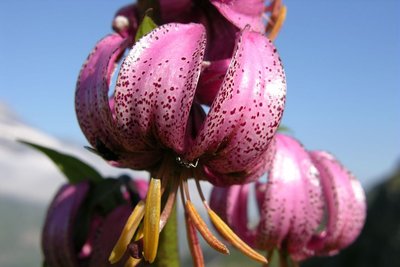
Lis martagon - Thierry Maillet - Parc national des Écrins  Flora
FloraThe martagon lily
In the forest, the martagon lily is a common sight. This superb plant has large hanging flowers with curved-back petals, which are pink speckled with purple and exposed orangey stamens. Its leaves are elongated and whorled. It grows in meadows and cool woods. Although common here, it is rare in many French regions. In fact, picking it is prohibited or regulated.
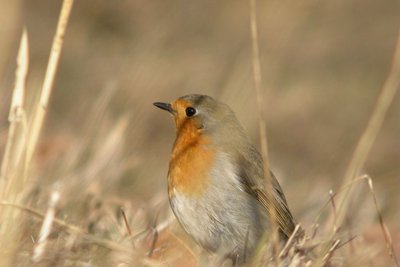
Le rougegorge - Damien Combrisson - Parc national des Écrins  Fauna
FaunaThe robin
The robin is a common sight around bird feeders in winter. But he is primarily a forest bird, building his nest close to the ground in a cavity in a rock or tree. His song is a gentle chatter, rising to high notes. The robin "redbreast" is a relatively solitary and territorial bird, and he defends his territory by displaying his red (actually, orange!) breast as he sings.
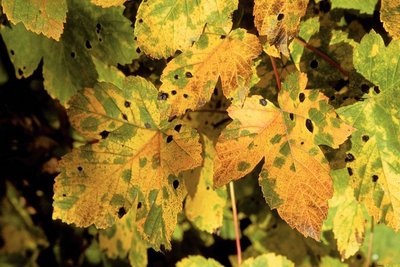
L'érable sycomore - Bernard Nicollet - Parc national des Écrins  Flora
FloraThe sycamore
The sycamore is a beautiful tree. Its leaves have five rather pointed lobes, similar to those of the plane tree. It cannot tolerate drought, so it grows in this region in relatively cool deciduous forests. Its twin fruits, equipped with wings, twist as they fal: the «helicopters» that children love. In autumn, its leaves turn golden yellow creating a delightful sight.
Source

Report a problem or an error
If you have found an error on this page or if you have noticed any problems during your hike, please report them to us here:

